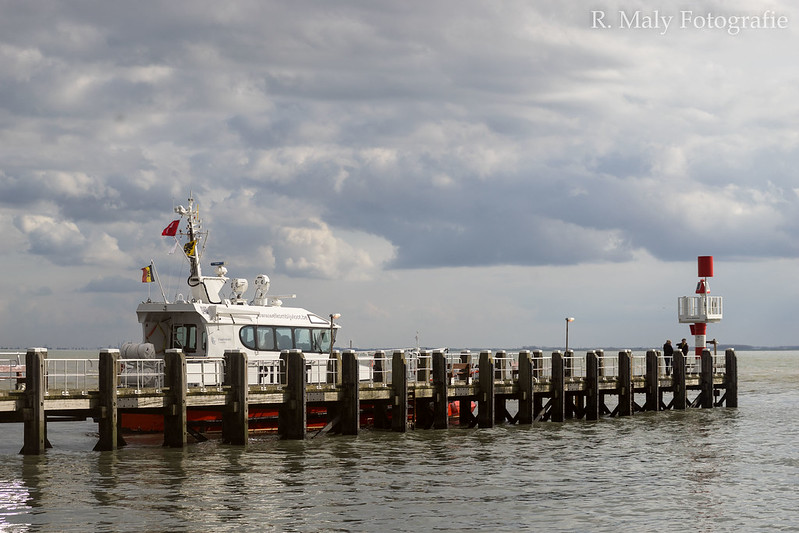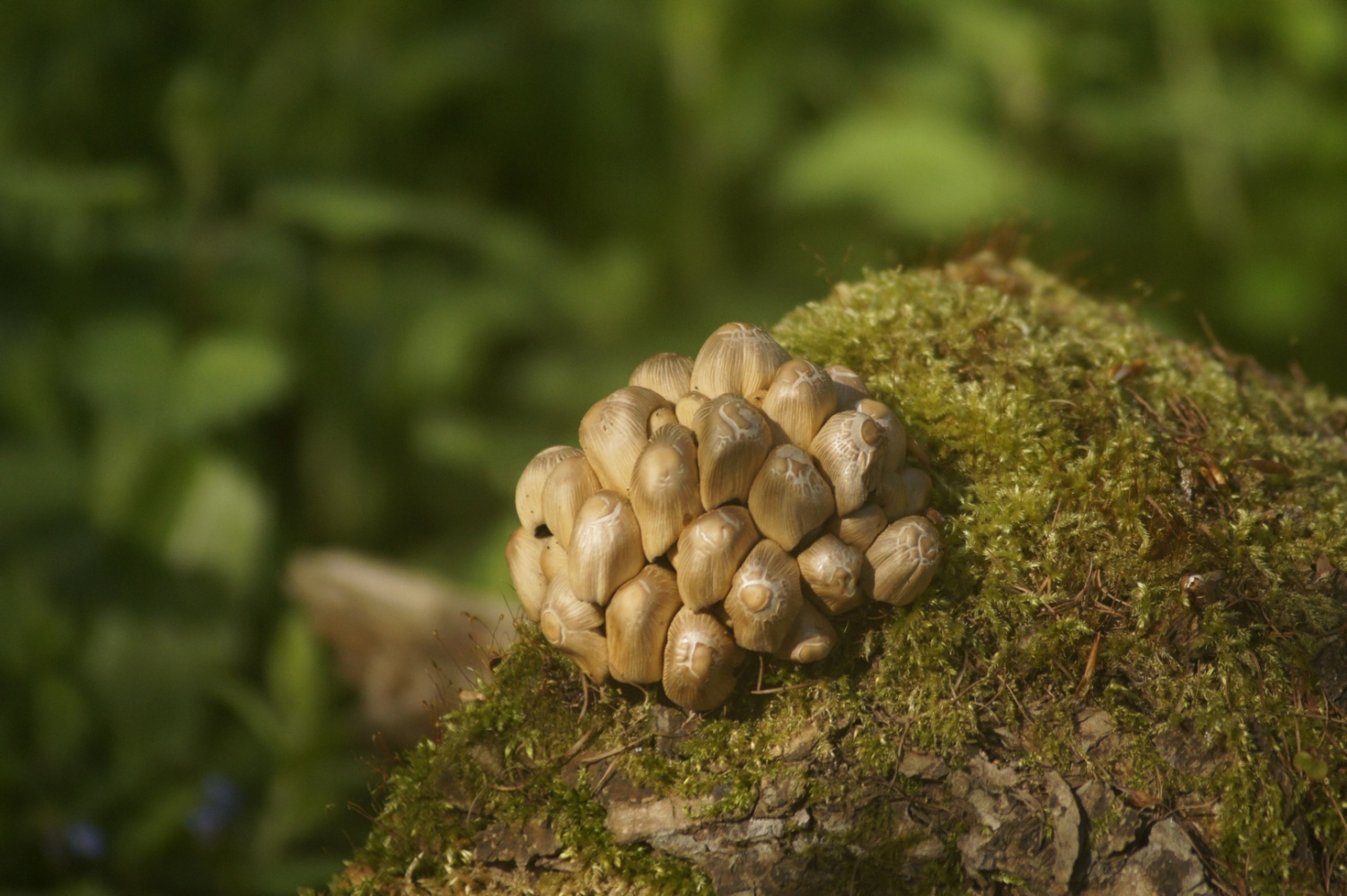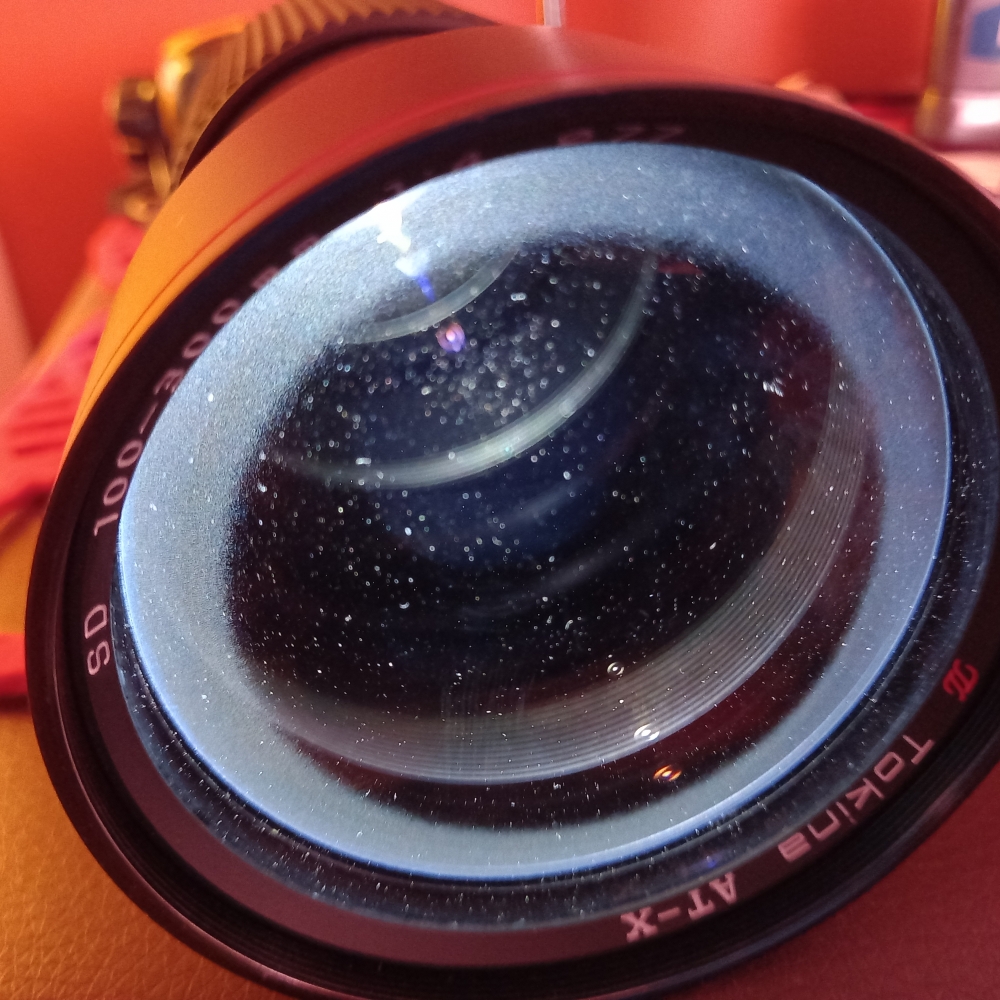| View previous topic :: View next topic |
| Author |
Message |
TrueLoveOne


Joined: 30 Sep 2012
Posts: 1839
Location: Netherlands
Expire: 2013-12-24
|
 Posted: Wed Feb 24, 2016 5:59 pm Post subject: Tokina AT-X SD 2.8/80-200 (hazy element) Posted: Wed Feb 24, 2016 5:59 pm Post subject: Tokina AT-X SD 2.8/80-200 (hazy element) |
 |
|
TrueLoveOne wrote:
This one got mentioned in another topic about the AT-X 100-300. I never really used mine except for a few shots on film, mainly because i knew it had some mild haze inside.
Apparently this can not be cleaned, so taking it to pieces is not going to happen! Instead i decided to use it on digital for the first time and took a walk with it on the A7.
The haze is not visible in the pictures, even wide open it produces nice pictures, although with a little less contrast and some CA, but that is not a problem in LR.
I'm glad i took it out, i like the results and i think this thread can be seen as the proof that the haze of the SD element does not mean that the lens is a write off!
First picture is straight out of camera, no PP at all, it's a converted RAW shot from LR. Second is a crop of the same shot and third is the same picture with some PP. Number 4 is also shot wide open, f/2.8.
Stopped down it's really a nice lens, plenty sharp with nice colors!
Thanks for looking, cheers, René!
1.

2.

3.
 Fishing in Flushing by René Maly, on Flickr Fishing in Flushing by René Maly, on Flickr
4. wide open
 On the gun by René Maly, on Flickr On the gun by René Maly, on Flickr
5.
 Pilot by René Maly, on Flickr Pilot by René Maly, on Flickr
6.
 Blvd. De Ruyter by René Maly, on Flickr Blvd. De Ruyter by René Maly, on Flickr
7.
 CLS AMG by René Maly, on Flickr CLS AMG by René Maly, on Flickr
_________________
My Flickr photostream: http://www.flickr.com/photos/chantalrene/
Sony A7, Canon 5D mkII, Minolta 7D + RD3000 and some more.....
Minolta and Konica collector.... slowly selling all the other stuff! |
|
| Back to top |
|
 |
Lloydy


Joined: 02 Sep 2009
Posts: 7795
Location: Ironbridge. UK.
Expire: 2022-01-01
|
 Posted: Wed Feb 24, 2016 9:42 pm Post subject: Posted: Wed Feb 24, 2016 9:42 pm Post subject: |
 |
|
Lloydy wrote:
My copy of this great lens is also very hazy, just on the one element - apparently the SD element is the one affected and it's not possible to clean the haze. Which is a shame as this is truly an excellent lens, but all is not lost.
The result of the haze seems to be a loss of contrast and nothing more, my copy is still very sharp, and any effect on the aperture speed would surely be marginal ? I still use mine in low light and enjoy the benefits of the fast f2.8 aperture - if that's what it is now.
The loss of contrast is easily corrected in any simple post processing, the picture of the pigs was done in Photoshop with the 'Auto Contrast' setting and the stage picture was corrected in Faststone by using the 'Auto Colour' setting. Other than resizing, no other processing.




This lens was dirt cheap, it's in excellent condition other than the haze and it cost me £5 from some dealers box of junk at the local camera fair. It was worth a lot more, and I use it a lot.
_________________
LENSES & CAMERAS FOR SALE.....
I have loads of stuff that I have to get rid of, if you see me commenting about something I have got and you want one, ask me.
My Flickr https://www.flickr.com/photos/mudplugga/
My ipernity -
http://www.ipernity.com/home/294337 |
|
| Back to top |
|
 |
cooltouch


Joined: 15 Jan 2009
Posts: 9096
Location: Houston, Texas
|
 Posted: Thu Feb 25, 2016 2:42 am Post subject: Posted: Thu Feb 25, 2016 2:42 am Post subject: |
 |
|
cooltouch wrote:
Good job on getting rid of the haze, Lloyd. I just use the "curves" function in PhotoShop. That's almost always sufficient in restoring a realistic looking contrast in my photos that are lacking it.
I need to test my AT-X 100-300 for it. It isn't visible just looking through the lens. so I guess I need to try it with a subject that is supposed to create this halo effect. I have an AT-X 150-500 on order -- should arrive within the next day or two -- and I'll need to test it for this same condition as well.
_________________
Michael
My Gear List: http://michaelmcbroom.com/photo/gear.html
My Gallery: http://michaelmcbroom.com/gallery3/index.php/
My Flickr Page: https://www.flickr.com/photos/11308754@N08/albums
My Music: https://soundcloud.com/michaelmcbroom/albums
My Blog: http://michaelmcbroom.com/blogistan/ |
|
| Back to top |
|
 |
WNG555


Joined: 18 Dec 2014
Posts: 784
Location: Arrid-Zone-A, USA
|
 Posted: Thu Feb 25, 2016 5:10 am Post subject: Posted: Thu Feb 25, 2016 5:10 am Post subject: |
 |
|
WNG555 wrote:
My copy of this zoom lens came full of fungus. And I was able to access and clean off the stuff from all the affected elements.
I will assume that the haze isn't removable due to permanent coating defect, and not due to access. This model is quite straight forward to disassemble.
Oddly, I've come across quite a number of vintage Tokinas suffering from haze. Even when the element has no exposure to air, the coating deteriorated.
I'll have to pull out my 80-200 f2.8 and take a look at it. I don't use my big zooms much.
_________________
"The eyes are useless when the mind is blind."
Sony ILCE-6000, SELP1650, SEL1855, SEL55210, SEL5018. Sigma 19/30/60mm f2.8 EX DN Art.
Rokinon 8mm f3.5 Fish-Eye, 14mm f2.8 IF ED UMC. Samyang 12mm f2.8 ED AS NCS Fish-Eye.
And a bunch of Manual-Focus Lenses
My Flickr |
|
| Back to top |
|
 |
gLOW-x

Joined: 21 Jan 2016
Posts: 39
|
 Posted: Thu Feb 25, 2016 7:28 am Post subject: Posted: Thu Feb 25, 2016 7:28 am Post subject: |
 |
|
gLOW-x wrote:
thanks for showing real world impact from SD element haze 
Contrast lost, almost like SC vs MC coating. |
|
| Back to top |
|
 |
TrueLoveOne


Joined: 30 Sep 2012
Posts: 1839
Location: Netherlands
Expire: 2013-12-24
|
 Posted: Thu Feb 25, 2016 7:50 am Post subject: Posted: Thu Feb 25, 2016 7:50 am Post subject: |
 |
|
TrueLoveOne wrote:
| Lloydy wrote: |
My copy of this great lens is also very hazy, just on the one element - apparently the SD element is the one affected and it's not possible to clean the haze. Which is a shame as this is truly an excellent lens, but all is not lost.
|
Indeed, all is not lost, which you show quite well, even though yours seems to be worse than mine, it really is a nice lens!!
Cheers, René!
_________________
My Flickr photostream: http://www.flickr.com/photos/chantalrene/
Sony A7, Canon 5D mkII, Minolta 7D + RD3000 and some more.....
Minolta and Konica collector.... slowly selling all the other stuff! |
|
| Back to top |
|
 |
cooltouch


Joined: 15 Jan 2009
Posts: 9096
Location: Houston, Texas
|
 Posted: Thu Feb 25, 2016 11:54 am Post subject: Posted: Thu Feb 25, 2016 11:54 am Post subject: |
 |
|
cooltouch wrote:
| WNG555 wrote: |
My copy of this zoom lens came full of fungus. And I was able to access and clean off the stuff from all the affected elements.
I will assume that the haze isn't removable due to permanent coating defect, and not due to access. This model is quite straight forward to disassemble.
Oddly, I've come across quite a number of vintage Tokinas suffering from haze. Even when the element has no exposure to air, the coating deteriorated.
I'll have to pull out my 80-200 f2.8 and take a look at it. I don't use my big zooms much. |
Yes, please let us know what you find, and how it performs.
_________________
Michael
My Gear List: http://michaelmcbroom.com/photo/gear.html
My Gallery: http://michaelmcbroom.com/gallery3/index.php/
My Flickr Page: https://www.flickr.com/photos/11308754@N08/albums
My Music: https://soundcloud.com/michaelmcbroom/albums
My Blog: http://michaelmcbroom.com/blogistan/ |
|
| Back to top |
|
 |
Lloydy


Joined: 02 Sep 2009
Posts: 7795
Location: Ironbridge. UK.
Expire: 2022-01-01
|
 Posted: Thu Feb 25, 2016 2:52 pm Post subject: Posted: Thu Feb 25, 2016 2:52 pm Post subject: |
 |
|
Lloydy wrote:
The haze is quite severe in my lens, just on one element I think. I haven't dismantled it that far yet. To see it you need strong light shining through, such as a LED torch, it is visible in normal light but only just. Which might explain the loss of contrast when the lens is used in bright light as both my pictures are. Lower light pictures are hardly affected, both of these are from the same day, same ISO etc but taken in the shade. No processing at all.


I tried the Auto Colour setting in Faststone and it lightened the fungus picture a lot, and turned the green background to bright blue in the flower picture. Neither picture benefits from an increase in contrast, in fact it makes both worse.
_________________
LENSES & CAMERAS FOR SALE.....
I have loads of stuff that I have to get rid of, if you see me commenting about something I have got and you want one, ask me.
My Flickr https://www.flickr.com/photos/mudplugga/
My ipernity -
http://www.ipernity.com/home/294337 |
|
| Back to top |
|
 |
WNG555


Joined: 18 Dec 2014
Posts: 784
Location: Arrid-Zone-A, USA
|
 Posted: Sat Feb 27, 2016 9:12 am Post subject: Posted: Sat Feb 27, 2016 9:12 am Post subject: |
 |
|
WNG555 wrote:
| cooltouch wrote: |
| WNG555 wrote: |
My copy of this zoom lens came full of fungus. And I was able to access and clean off the stuff from all the affected elements.
I will assume that the haze isn't removable due to permanent coating defect, and not due to access. This model is quite straight forward to disassemble.
Oddly, I've come across quite a number of vintage Tokinas suffering from haze. Even when the element has no exposure to air, the coating deteriorated.
I'll have to pull out my 80-200 f2.8 and take a look at it. I don't use my big zooms much. |
Yes, please let us know what you find, and how it performs. |
I managed to dig out my two AT-X zooms, and inspected them with a CREE LED.
The 80-200mm passed with no sign of haze.
The 100-300mm looked clean and clear when I took it out. But the LED revealed haze developed on some inner element. Like shining a light through fine mist.
Not the front objective SD element.
#$#@!%$!$%
It probably won't affect imaging severely. But will see if I can shoot some subjects over the weekend.
_________________
"The eyes are useless when the mind is blind."
Sony ILCE-6000, SELP1650, SEL1855, SEL55210, SEL5018. Sigma 19/30/60mm f2.8 EX DN Art.
Rokinon 8mm f3.5 Fish-Eye, 14mm f2.8 IF ED UMC. Samyang 12mm f2.8 ED AS NCS Fish-Eye.
And a bunch of Manual-Focus Lenses
My Flickr |
|
| Back to top |
|
 |
TrueLoveOne


Joined: 30 Sep 2012
Posts: 1839
Location: Netherlands
Expire: 2013-12-24
|
 Posted: Sat Feb 27, 2016 11:31 am Post subject: Posted: Sat Feb 27, 2016 11:31 am Post subject: |
 |
|
TrueLoveOne wrote:
| WNG555 wrote: |
But the LED revealed haze developed on some inner element. Like shining a light through fine mist.
|
That is how i would describe the haze in my copy. As you can see above, it's no big deal, just enjoy your lens!
_________________
My Flickr photostream: http://www.flickr.com/photos/chantalrene/
Sony A7, Canon 5D mkII, Minolta 7D + RD3000 and some more.....
Minolta and Konica collector.... slowly selling all the other stuff! |
|
| Back to top |
|
 |
Lloydy


Joined: 02 Sep 2009
Posts: 7795
Location: Ironbridge. UK.
Expire: 2022-01-01
|
 Posted: Sat Feb 27, 2016 1:26 pm Post subject: Posted: Sat Feb 27, 2016 1:26 pm Post subject: |
 |
|
Lloydy wrote:
Yes, it shows up with strong light such as LED torch but is barely visible without. Mine is not even across the affected element either.
_________________
LENSES & CAMERAS FOR SALE.....
I have loads of stuff that I have to get rid of, if you see me commenting about something I have got and you want one, ask me.
My Flickr https://www.flickr.com/photos/mudplugga/
My ipernity -
http://www.ipernity.com/home/294337 |
|
| Back to top |
|
 |
stevemark

Joined: 29 Apr 2011
Posts: 4073
Location: Switzerland
|
 Posted: Sun Mar 06, 2016 1:07 am Post subject: Posted: Sun Mar 06, 2016 1:07 am Post subject: |
 |
|
stevemark wrote:
| WNG555 wrote: |
My copy of this zoom lens came full of fungus. And I was able to access and clean off the stuff from all the affected elements.
... |
Could you elaborate a bit about HOW you cleaned the Tokina 2.8/80-200mm? I recently bought a AT-X 2.8/80-200mm with fungus in the front section, and i'd love to clean it!
Thanks in advance!
Stephan
_________________
www.artaphot.ch |
|
| Back to top |
|
 |
WNG555


Joined: 18 Dec 2014
Posts: 784
Location: Arrid-Zone-A, USA
|
 Posted: Sun Mar 06, 2016 2:37 am Post subject: Posted: Sun Mar 06, 2016 2:37 am Post subject: |
 |
|
WNG555 wrote:
| stevemark wrote: |
| WNG555 wrote: |
My copy of this zoom lens came full of fungus. And I was able to access and clean off the stuff from all the affected elements.
... |
Could you elaborate a bit about HOW you cleaned the Tokina 2.8/80-200mm? I recently bought a AT-X 2.8/80-200mm with fungus in the front section, and i'd love to clean it!
Thanks in advance!
Stephan |
The front elements are accessed by first locating and loosening one small set screw near the front of the rim. You'll need a quality flat bladed screwdriver.
Remove the set screw and store aside.
Now the front red ring/threaded filter ring can be loosened and unscrewed. Once off you'll see the standard slotted retainer rings securing each front element.
It's straight forward from here. Each element can be removed until you gain access to the zoom's floating element assembly. That could be unscrewed as a unit and disassembled further if fungus is on any of those as well.
Cleaning solutions were ammonia-based glass cleaner, isopropanol, followed by a final wipe with dedicated lens cleaning fluid. Lot's of cotton swabs and lens cleaning tissue.
_________________
"The eyes are useless when the mind is blind."
Sony ILCE-6000, SELP1650, SEL1855, SEL55210, SEL5018. Sigma 19/30/60mm f2.8 EX DN Art.
Rokinon 8mm f3.5 Fish-Eye, 14mm f2.8 IF ED UMC. Samyang 12mm f2.8 ED AS NCS Fish-Eye.
And a bunch of Manual-Focus Lenses
My Flickr
Last edited by WNG555 on Mon Mar 07, 2016 7:04 am; edited 1 time in total |
|
| Back to top |
|
 |
stevemark

Joined: 29 Apr 2011
Posts: 4073
Location: Switzerland
|
 Posted: Sun Mar 06, 2016 5:38 am Post subject: Posted: Sun Mar 06, 2016 5:38 am Post subject: |
 |
|
stevemark wrote:
| WNG555 wrote: |
...
The front elements are accessed by first locating and loosening one small set screw near the front of the rim. You'll need a quality flat bladed screwdriver.
Remove the set screw and store aside.
Now the front red ring/threaded filter ring can be loosened and unscrewed. Once off you'll see the standard slotted retainer rings securing each front element.
It's straight forward from here. ... |
Thanks a lot for your information! - I just dismantled and cleaned my AT-X 2.8/80-200mm (only the two front elements were affected). The lens, now clean, will be tested soon with my A7 
Stephan
_________________
www.artaphot.ch |
|
| Back to top |
|
 |
WNG555


Joined: 18 Dec 2014
Posts: 784
Location: Arrid-Zone-A, USA
|
 Posted: Mon Mar 07, 2016 7:03 am Post subject: Posted: Mon Mar 07, 2016 7:03 am Post subject: |
 |
|
WNG555 wrote:
| stevemark wrote: |
| WNG555 wrote: |
...
The front elements are accessed by first locating and loosening one small set screw near the front of the rim. You'll need a quality flat bladed screwdriver.
Remove the set screw and store aside.
Now the front red ring/threaded filter ring can be loosened and unscrewed. Once off you'll see the standard slotted retainer rings securing each front element.
It's straight forward from here. ... |
Thanks a lot for your information! - I just dismantled and cleaned my AT-X 2.8/80-200mm (only the two front elements were affected). The lens, now clean, will be tested soon with my A7 
Stephan |
That's great! Looking forward to seeing photos from your new acquisition.
_________________
"The eyes are useless when the mind is blind."
Sony ILCE-6000, SELP1650, SEL1855, SEL55210, SEL5018. Sigma 19/30/60mm f2.8 EX DN Art.
Rokinon 8mm f3.5 Fish-Eye, 14mm f2.8 IF ED UMC. Samyang 12mm f2.8 ED AS NCS Fish-Eye.
And a bunch of Manual-Focus Lenses
My Flickr |
|
| Back to top |
|
 |
EP Giovannini
Joined: 07 Mar 2019
Posts: 1
Location: Canada
|
 Posted: Thu Mar 07, 2019 2:04 am Post subject: Posted: Thu Mar 07, 2019 2:04 am Post subject: |
 |
|
EP Giovannini wrote:
How did you separate the elements in the front group?
Ed |
|
| Back to top |
|
 |
stevemark

Joined: 29 Apr 2011
Posts: 4073
Location: Switzerland
|
 Posted: Sun May 08, 2022 11:56 pm Post subject: Posted: Sun May 08, 2022 11:56 pm Post subject: |
 |
|
stevemark wrote:
| EP Giovannini wrote: |
How did you separate the elements in the front group?
Ed |
1.) unscrew the three small screws on the outer rim of the lens barrel (front side, just below the red ring)
2.) unscrew the entire front element
3.) on the outer rim of the front element you can find two small screws, locked into position with a black paint or tar-like substance
4.) soak the screws for 1-2 min with acetone, and unscrew them
5.) now you can unscrew the front ring
6.) the first glass element (a cemented doublet) now is more or less free, but still glued into position with the same black tar-like substance
7.) soak the outer rim with acetone to loosen the glued front lens and take it out
8.) clean all lens surfaces
9.) re-assemble
S
_________________
www.artaphot.ch |
|
| Back to top |
|
 |
Phalbert

Joined: 17 May 2009
Posts: 383
Location: Namibia
|
 Posted: Tue May 10, 2022 10:44 am Post subject: Posted: Tue May 10, 2022 10:44 am Post subject: |
 |
|
Phalbert wrote:
This thread led me to have a look at my 100-300 and 150-500. Maybe I should not have done that.
Shining through the lenses with a led flashlight.
The 150-500 apparently has 2 slightly hazy spots somewhere at the far rear but not on the last element. The rest is dust barely visible in normal daylight. (1st pic)
The 100-300 is much worse. There are two hazy spots. The first one is also at the rear of the lens, but the second one is a strange ring shaped haze apparently right at the back of the first element. (2nd & 3rd pic)
Until now I assumed these lenses were clean.. 😕 Still very usable though.



_________________
🙋 My wishlist: Titan or Idaho 135/1,8 Nikon Df Nikkor 105/1,8 35/1,4 85/1,4
My dream lenses: Zuiko 180/2 Prototype Zuiko 85/1,4
Zeiss CY: 55/1,2 85/1,2
Astro Berlin 250/2 Canon EF 50/1,0 85/1,2
Nikkor 105/1,4 28/1,4
My stolen stuff: Zuiko 24/2 #106874; Zuiko 35-80/2,8 #102180; Zuiko 35/2 #119168; Zuiko 90/2 macro #102858; Zuiko x1,4 converter #102019; Tamron 17/3,5 #400567; Tamron 400/4 #80407; Soligor 135/2 #17506600 Sigma 28/1,8 #1001124 |
|
| Back to top |
|
 |
stevemark

Joined: 29 Apr 2011
Posts: 4073
Location: Switzerland
|
 Posted: Tue May 10, 2022 6:05 pm Post subject: Posted: Tue May 10, 2022 6:05 pm Post subject: |
 |
|
stevemark wrote:
| Phalbert wrote: |
This thread led me to have a look at my 100-300 and 150-500. Maybe I should not have done that.
...
The 100-300 is much worse. There are two hazy spots. ... the second one is a strange ring shaped haze apparently right at the back of the first element. (2nd & 3rd pic)
 |
That looks pretty similar to what I've just been cleaning on my AT-X 2.8/80-200mm. The stuff probably comes from black tar-like substance with a strange smell which was used to secure (to lock into position) the doublet in the front element. If the 4/100-300mm has a similar construction as the 2.8/80-200mm, it should be pretty easy to clean it. Juts be aware that several screws and the lens doublet itself MUST be soaked with a suitable solvent (e. g. actetone) first, to un-block them ...!
S
_________________
www.artaphot.ch |
|
| Back to top |
|
 |
|
|
|
You cannot post new topics in this forum
You cannot reply to topics in this forum
You cannot edit your posts in this forum
You cannot delete your posts in this forum
You cannot vote in polls in this forum
|
